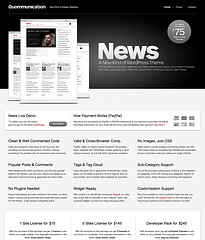 Web Site Architecture can have a direct impact on the way search engines interpret your information and determine its relevancy. We will look at some of the things you must be aware of from the very start, before the website design phase even begins. We wouldn’t want to kill SEO (Search Engine Optimization) opportunities at this stage; nobody likes doing the same job twice and if the information architecture is tainted, that’s exactly what you will end up needing to do. I’ve seen it happen; many times over.
Web Site Architecture can have a direct impact on the way search engines interpret your information and determine its relevancy. We will look at some of the things you must be aware of from the very start, before the website design phase even begins. We wouldn’t want to kill SEO (Search Engine Optimization) opportunities at this stage; nobody likes doing the same job twice and if the information architecture is tainted, that’s exactly what you will end up needing to do. I’ve seen it happen; many times over.
Love is in the Eye of the Beholder <3
When the search engines crawl your website they do not see the pages in the same way that human visitors do. This is probably the most important thing to remember when building your website and will dictate the outcome of most decisions that you will ever make when designing a website that you want to perform well in the SERPs (Search Engine Results Pages). The spiders that crawl your website, such as googlebot, read web pages on a code-level and dissect the information they read in order to try to determine what the page is about. Usually this will mean that putting the most important information you want to communicate as close to the top of the code as possible and not nested inside many tables or wrapped around a plethora of ‘mayhem and chaos’.
Avoid the Mayhem & Chaos
Javascript
As a rule of thumb, it is generally accepted that it is better practice to link to external files wherever possible, rather than presenting on the web page itself. Many spiders may timeout or reach their maximum character count when reading your page(s), potentially preventing it from completing it’s process of reading all that you have to offer and abandoning the page altogether if you use a lot of javascript. Avoid using JavaScript to build links and menus. Spiders do not like it, they are much more at home following native text links marked-up in a standard form. Avoid using too much Javascript in the head of your html document and avoid dropping it between sections of your page.
 Flash
Flash
Whilst Flash can make a good impression with your visitors, Flash cannot yet be read by the search engines, therefore you must be aware that any content included in a flash applet will be invisible to the search engines. Using Flash for your navigational menus is like placing Search Engine spider-traps. There really is no excuse for it. Alternatives exist that can present almost, if not, just as well as flash when it comes to menus; look to CSS for rollover effects for example. In brief, placed strategically and minimally can be a very good thing, but in the wrong places, it could be the death of you.
Tables
Avoid using too many nested tables when considering Web Site Architecture. Using tables 4 or more deep can make page layout easier for a designer but some spiders can get a little lost and just give up on the page altogether. If the spider does eventually find the information, they may also think that it is nested so deep in the page that it is of little importance. Once again, CSS can position your information perfectly well without the need to over-nest tables, whatever your design needs.
Following to the above rules of website information architecture will not only make the page more Search Engine Friendly, but also make the management of your pages far less painful. You will be left you with clear and light-weight pages that both you and the spiders will be able to quickly and easily read.
Directory Structure
When designing your website, keep your directory structure simple and as high-level as possible. Avoid irrelevant or lengthy folder names and instead opt for short and descriptive names relating as closely to the overall content of the folder as possible. For small websites, try to keep all of your pages on the top-most level. Most search engines consider pages located nearer or at the top of the directory structure to be more important. Only the most complex websites need go as deep as 2, 3 or even 4 directories.
